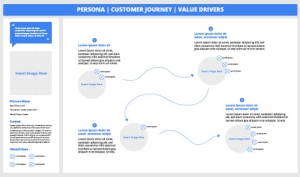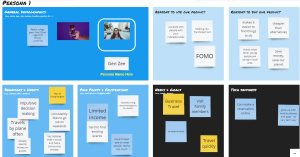Demystifying the Power of Personas for Agile & Scrum Teams

Using Personas in Agile and Scrum projects
Have you ever wished for a crystal ball that could tell you what your customers want before you even build your product? Well, we’ve got something better for you – personas! In the world of product management, especially when using Scrum, personas are your secret weapon to understanding user needs, creating better products, and ultimately delighting your customers. In this article, we’ll dive into the “why” and “value” of personas, and how they can help Product Owners on the Scrum Team.
Once Upon a Time: The Origin Story of Personas

Alan Cooper, Father of User Personas
Personas were first introduced by Alan Cooper, the father of Visual Basic, back in the late 90s. He realized that most software development projects were centered around feature lists, with little regard for the end user. Personas emerged as a way to humanize the development process and keep the focus on users, not just features.
Who Are You? Defining Personas

Personas Definition Guides the Development Process
A persona is a fictional representation of a user archetype, created based on research and insights from real users. Personas help teams empathize with their users and make better decisions throughout the product development lifecycle. A well-crafted persona includes:
- A name and photo
- Demographic information
- Goals and motivations
- Frustrations and pain points
- A brief backstory
The Value of Personas: A Tale of Two Teams
To illustrate the value of personas, let’s consider two Scrum teams working on similar projects.
Team A builds their product based on a list of features, without considering the needs of their users. As a result, they build an app that’s difficult to navigate and filled with unnecessary features that users don’t want. Ultimately, their product fails to gain traction in the market.
Team B, on the other hand, uses personas throughout their development process. They understand their users’ goals, frustrations, and motivations, which allows them to create a user-friendly app with features that address real pain points. Their product becomes a huge success.
Personas in Action: How Scrum Teams Benefit
Personas can be used by Product Owners and the Scrum Team to:
- Guide feature prioritization: Personas help teams focus on features that address real user needs, rather than building everything on a wish list.
- Improve communication: By providing a common understanding of users, personas help the team communicate more effectively and efficiently.
- Foster empathy: Personas help team members put themselves in users’ shoes, making it easier to design solutions that meet their needs.
- Inform user testing: Personas can help identify appropriate test users and create realistic scenarios for user testing.
Crafting Personas: Tips and Tricks for Success
-

Personas Template for Scrum Teams
Base personas on real user data: Conduct interviews, surveys, and other research methods to gather insights about your users.
- Make them realistic, but not real: While personas should be grounded in reality, they should not represent actual individuals to avoid bias.
- Keep them visible: Post your personas on the walls of your team’s workspace or share them digitally to ensure they remain top-of-mind.
- Update them regularly: As your product and user base evolve, update your personas to reflect changes in user needs and goals.
The Happily Ever After: Personas Lead to Delighted Customers
In the end, the true value of personas lies in their ability to help Product Owners and Scrum Teams build products that address real user needs and delight their customers. So, gather your team, craft your personas, and embark on the journey to create better, more user-centered products.
In conclusion, personas are a powerful tool in product management and can help your Scrum Team create more successful and user-centric products. By humanizing the development process, fostering empathy, and guiding decision-making, personas enable teams to develop solutions that truly resonate with their customers. So, embrace the magic of personas, and watch your product success stories unfold.


